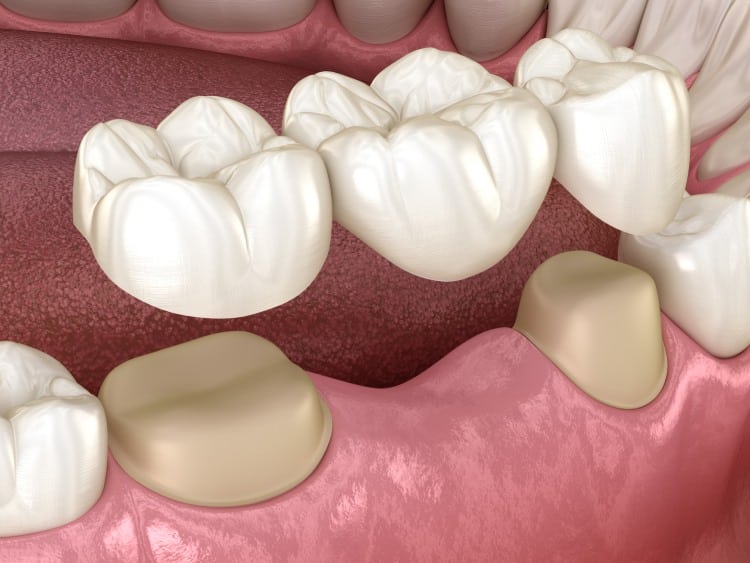
Missing teeth, or having bad teeth, can be very uncomfortable and damaging to your self-esteem and even to your quality of life. Missing teeth make you self-conscious, making you less likely to engage in social activities.
It can also make a bad impression in job interviews, on dates, and in any other situation where you’re trying to impress someone. Consequently, getting a dental bridge can be a lifesaver. But how much does a dental bridge usually cost?
Dental bridges are no doubt expensive, which is all the more reason why you want to have insurance coverage for this type of dental work. But even with dental insurance, a traditional dental bridge can be expensive.
With insurance, a dental bridge can cost around $1500 per tooth. Of course, this will depend on the dental insurance coverage that you have, and it will also depend on the type of bridge that you are getting. Very often, insurance companies will have a maximum benefit amount–they’ll pay that much and no more, no matter how many teeth you’re getting work done on. Other insurance companies will pay 50% of the cost of your bridges, provided you’ve had the dental insurance for more than a year.
What Types of Dental Bridges Are There?
Traditional Dental Bridge
A bridge is something dentists can use to cover up a missing tooth. The bridge has two parts: the false tooth called a pontic (note: this is different from a dental implant) and the attachments to the two remaining teeth to the sides, called abutments. Together, the pontic and abutments bridge the gap between the two teeth–hence the name “bridge”.
Bridges can be made from many different materials, including metal or porcelain, or even gold. When you have the bridge in your mouth you will be able to chew as normal without fear of the bridge coming loose. You’ll be able to have a clear smile again and feel better in social situations.
Cantilever Bridge
A cantilever bridge is similar to a traditional bridge, but instead of having an abutment against the two next teeth, it only has an abutment to one of the adjacent teeth. Because a cantilever bridge has to bear twice the pressure, this procedure is only done in certain circumstances, such as if the other tooth is also in bad shape and may need a bridge of its own.
Maryland Bridge
The Maryland Bridge is not as strong as the other type of bridges, because the dentist doesn’t crown the two abutment teeth. A metal framework holds the pontic in place. Maryland bridges can come loose, and also can be uncomfortable rubbing against the gums. Your dentist will talk you through the pros and cons.
Implant Supported Bridge
Implant supported bridges are the most expensive types of bridges, as many dental plans have very restrictive rules about implants. Instead of abutments to natural teeth, the bridge will have an abutment to an implant–false teeth. It will be the strongest type of bridge.







